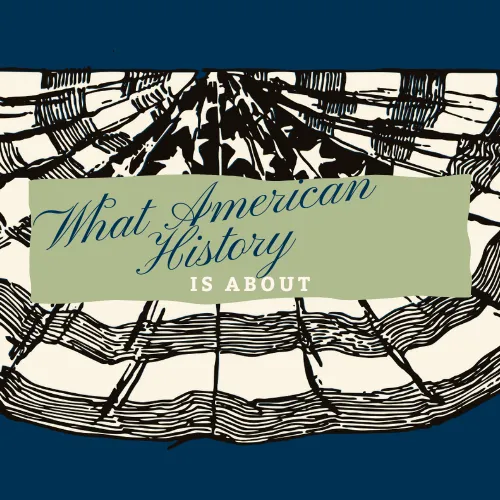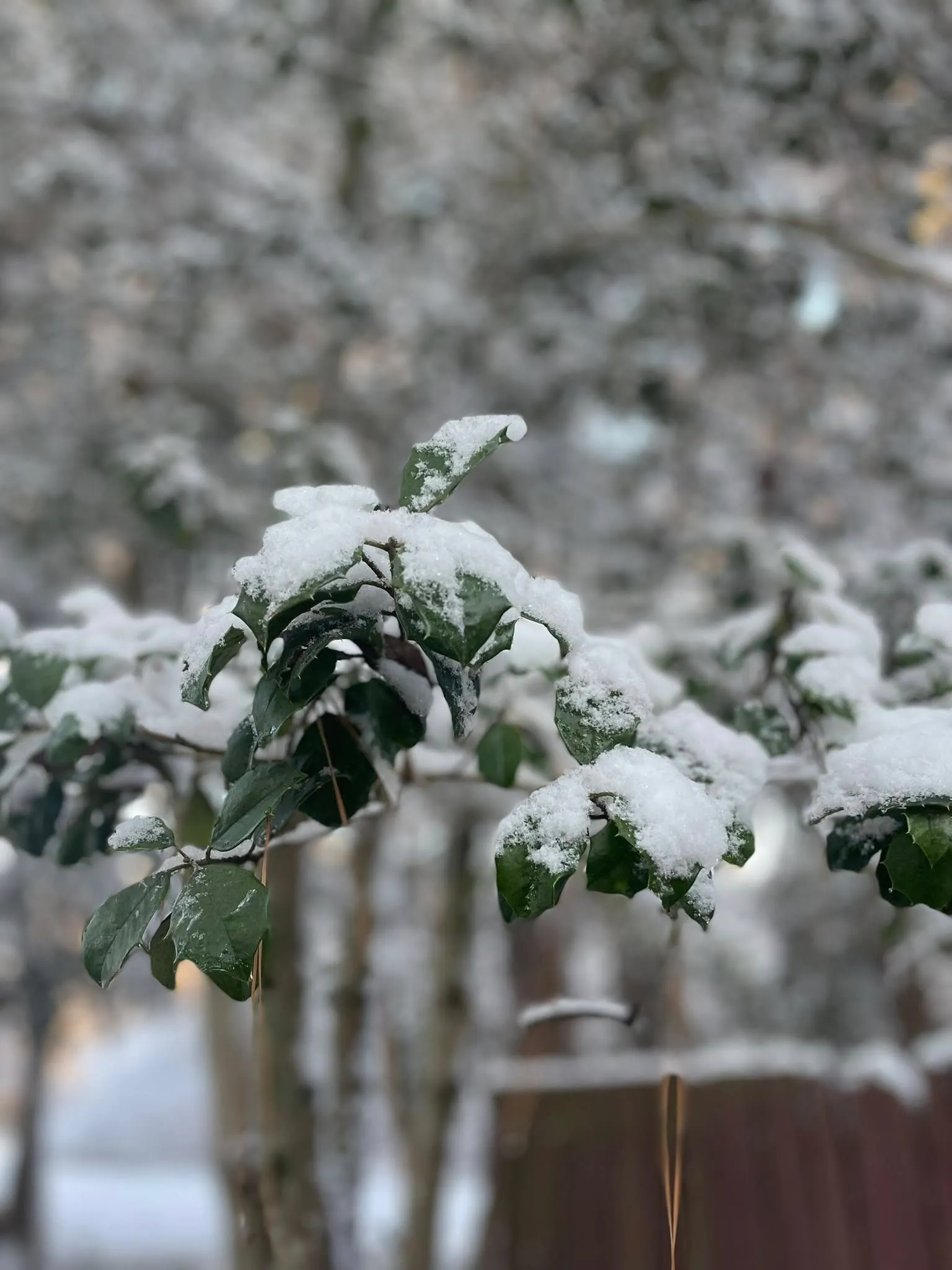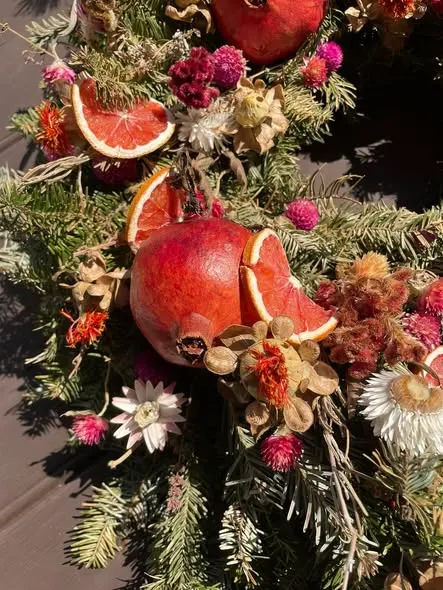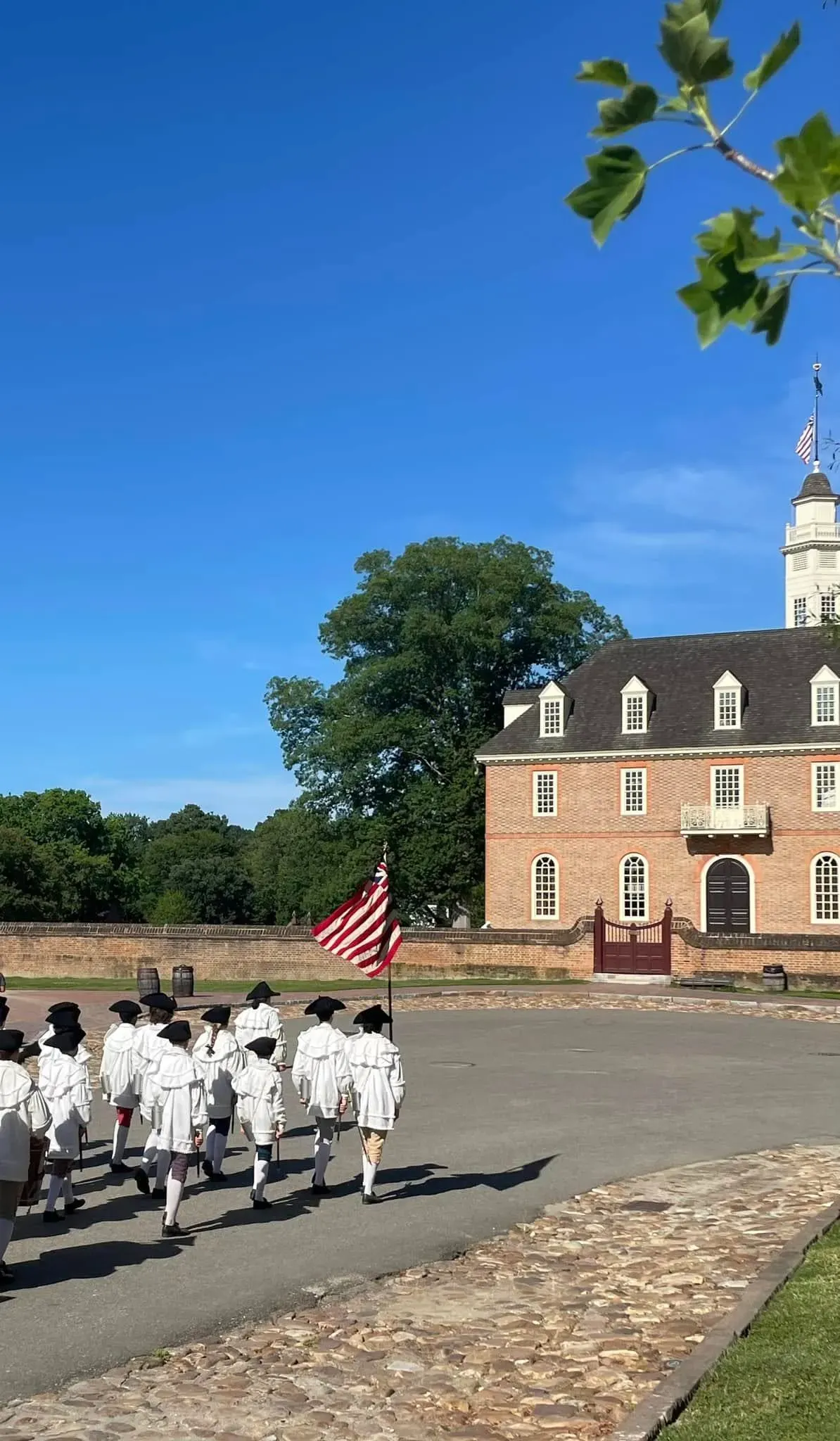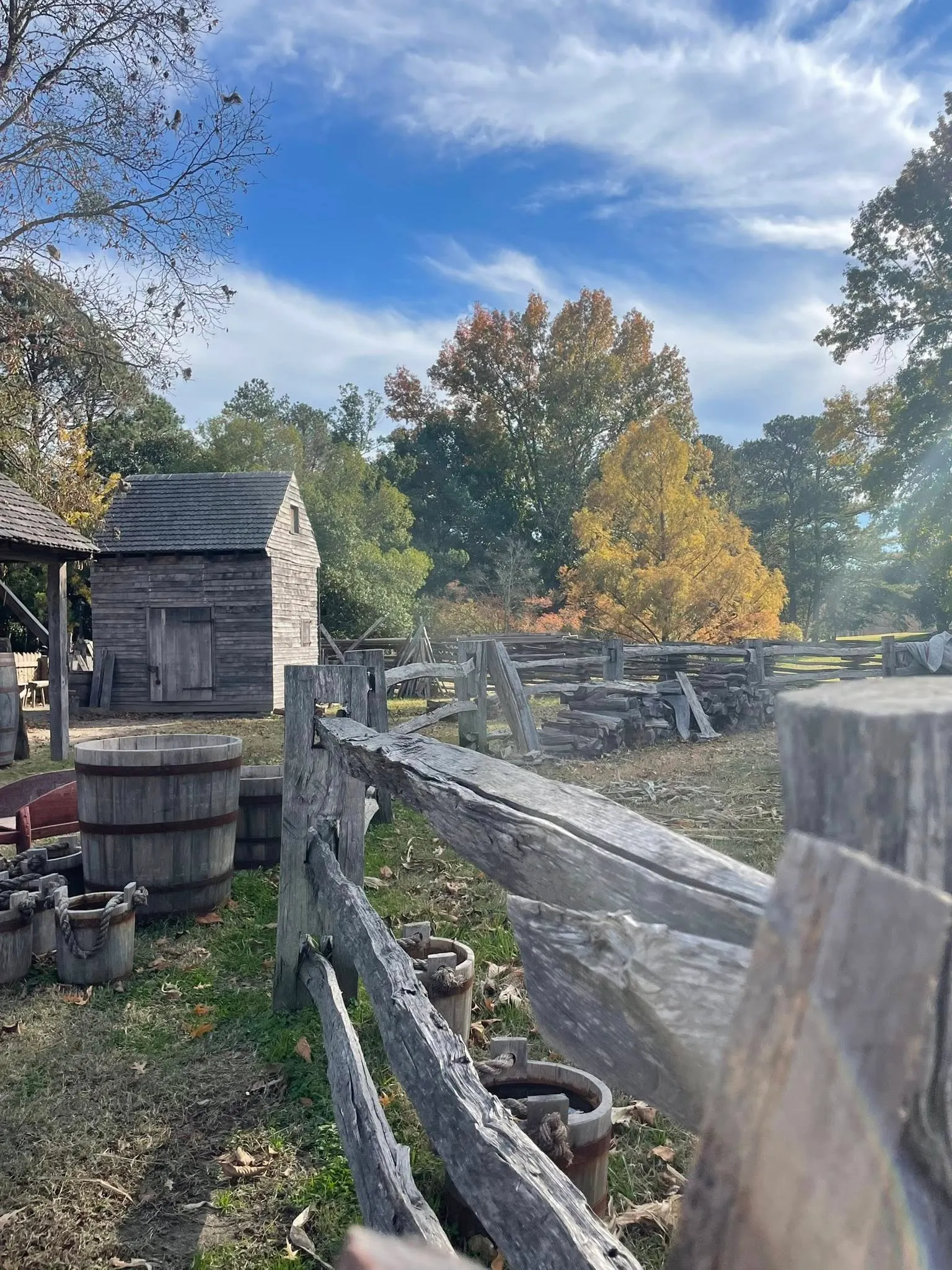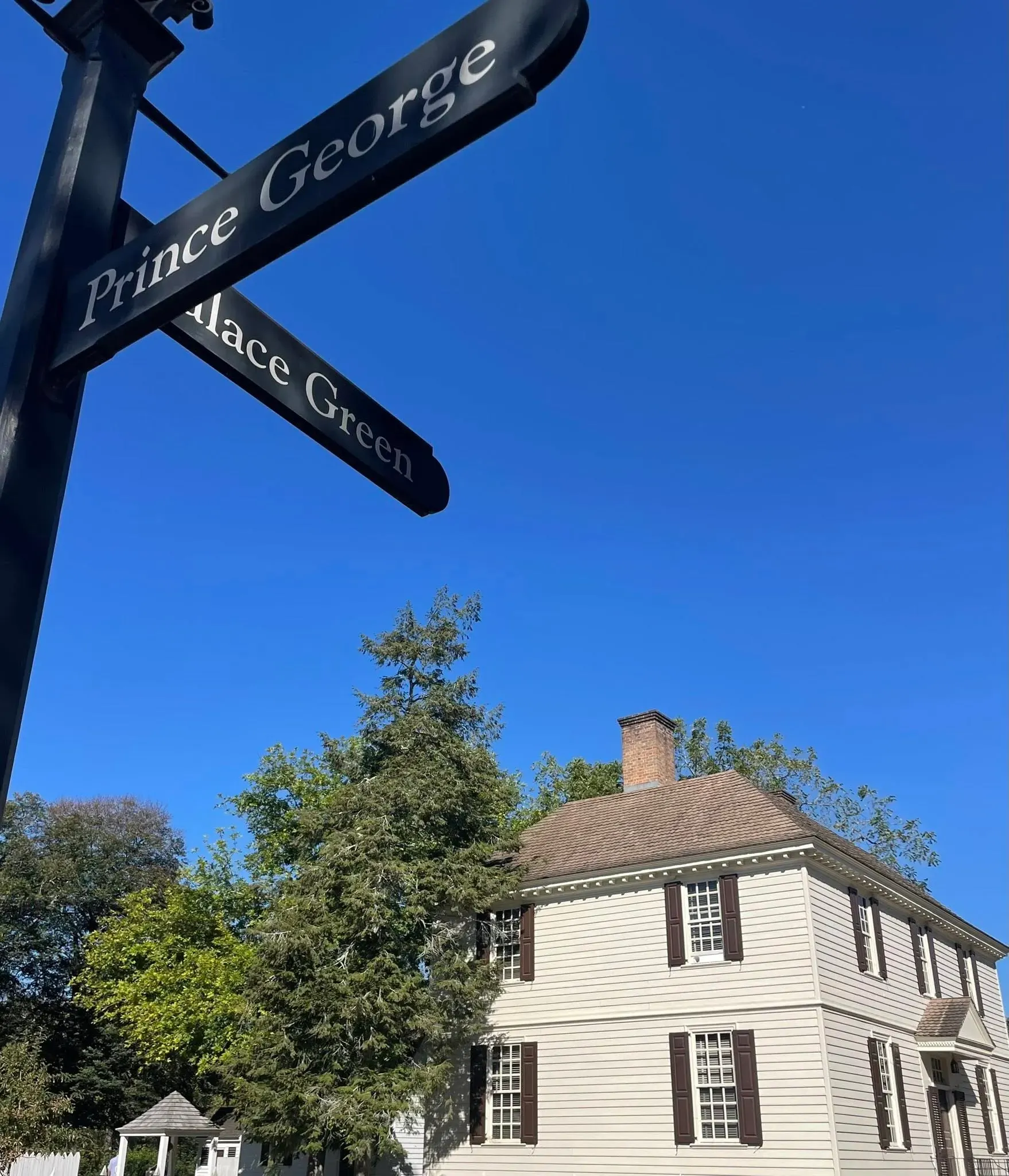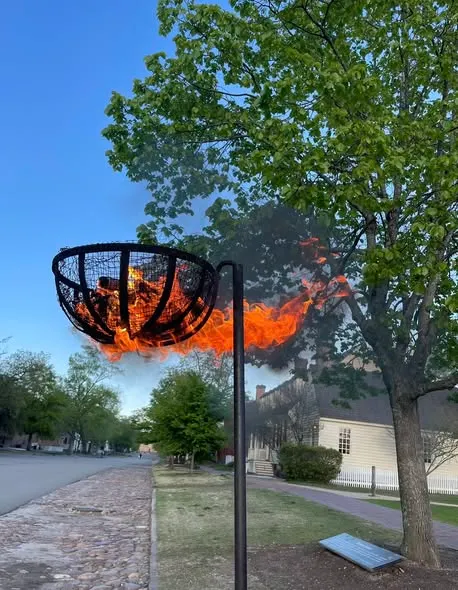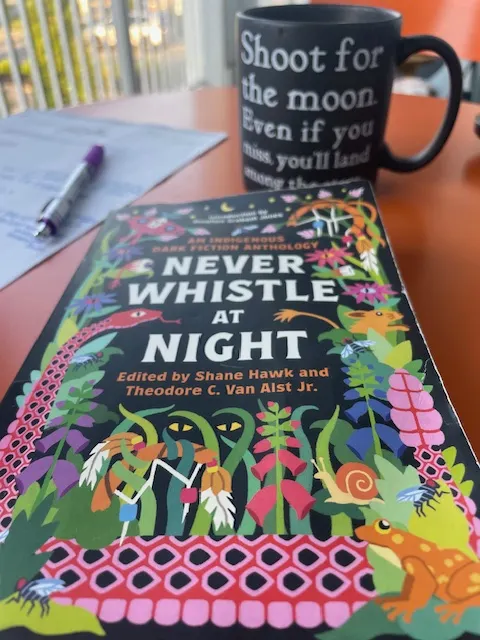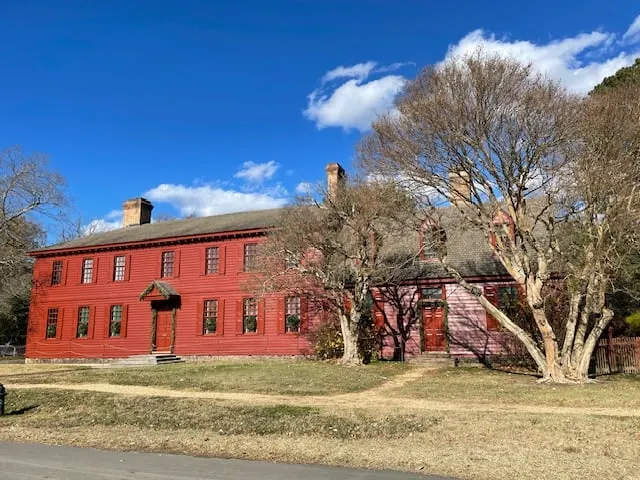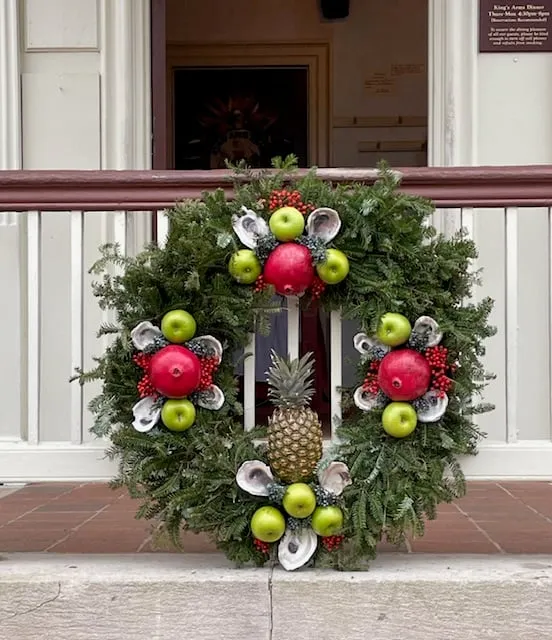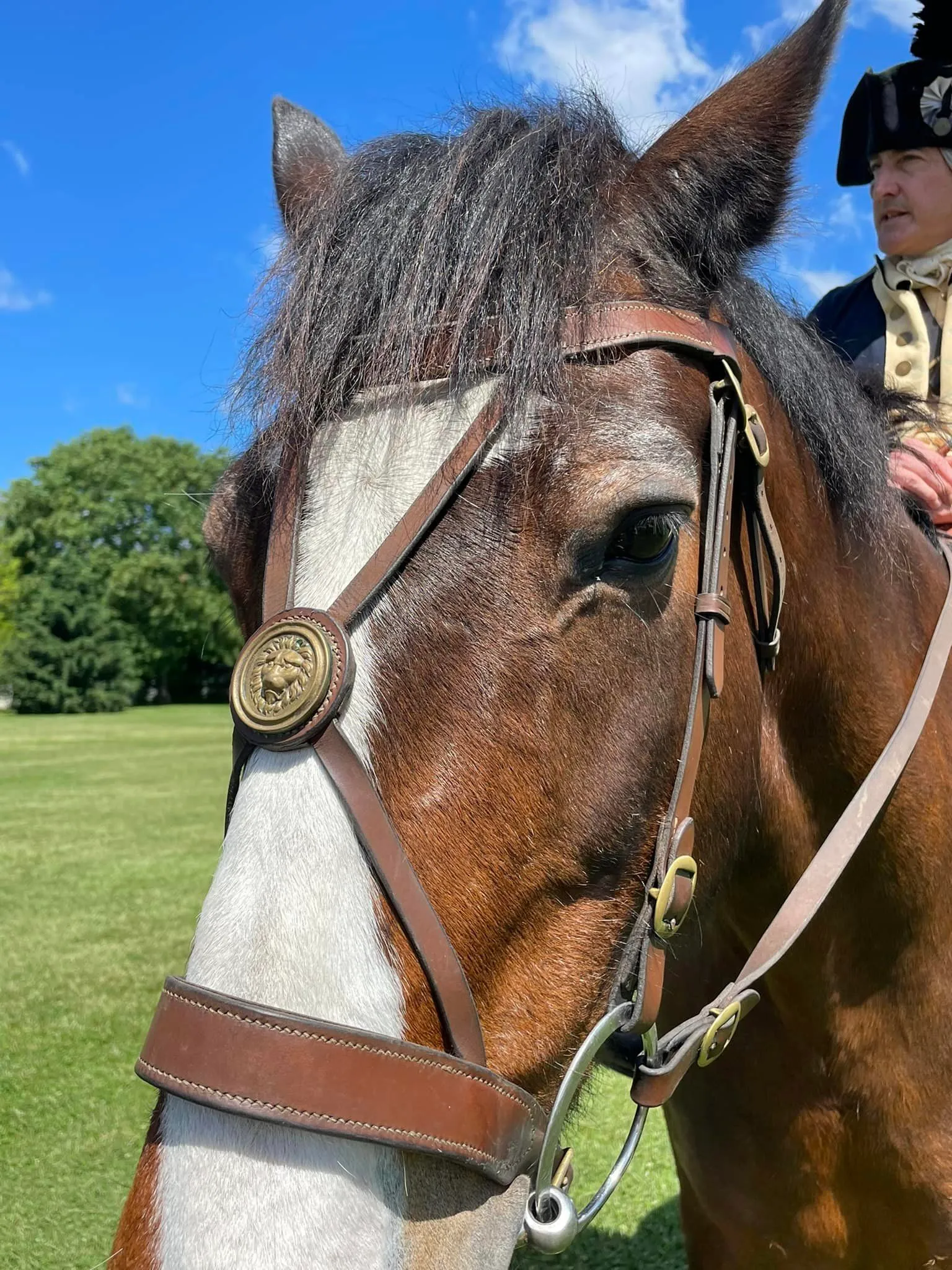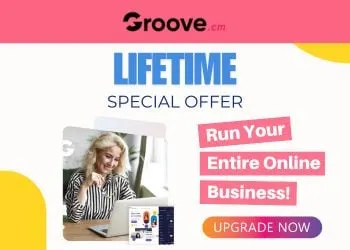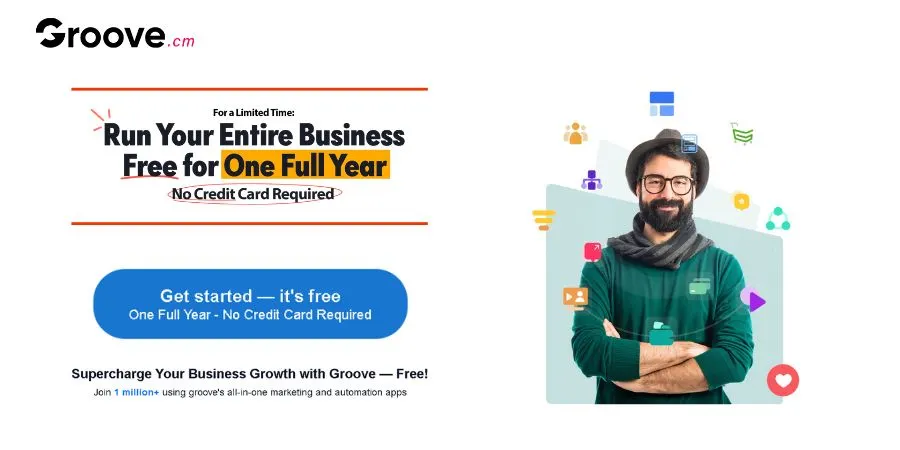Brick by Brick: The Story of Bacon’s Castle, America’s Oldest Recorded Brick Dwelling
Bacon's Castle is the oldest recorded brick dwelling in the United States of America- and that's so cool.
When friends visit, history is always involved. It's how we met Ken and Amy last summer (which inspired this post on Jefferson's music!). Their visit this week brought us to Bacon's Castle- not just for history but for Ken, who is a master builder, the building itself. And we got lucky with our tour guide: a PhD student at the College of William and Mary. Her focus is not just archaeology, but specifically Bacon's Castle, which was thankfully acquired by Preservation Virginia in the early 1970s.
So let's take a peek at the architecture, the family responsible for creating it, the name, and importantly, how you can plan the perfect visit! Because let's be honest - I can give you some tidbits that caught my attention, but when you visit yourself, you'll get so much more out of it!
Necessary disclaimer: As a blogger, I use affiliate links sometimes! I may receive commission from purchases I share; it does not change your price but sometimes you might get a discount.

View of original mantel.
The architecture- a brief overview.
Brick buildings were common in Colonial Virginia but the High Jacobean architecture of Bacon's Castle was unique. And this building is the "oldest brick dwelling in North America" according to Preservation Virginia!
A few notes about the structure, once a home and now a museum giving us insight to early American history:
- The original floorboards (including wood pegs!), fireplaces, brick facade, cellar, and roof structure (including nails!) are intact.
- The chimneys and outline (is that a legit word) of the building denote the High Jacobean style unique to Bacon's Castle in Colonial Virginia.
- Instead of a traditional attic, the building has more of a fourth floor. The ceilings are high and it was clearly intended to make the rooms upstairs functional.
- The 1660s portion of the building is Jacobean however, the 19th century square-look addition is clearly in the fashion of the 1800s.
- There was an 18th century addition replaced by the 19th century addition.
- Large 17th century fireplaces were updated in the 18th century to be more fashionable (English) but the original mantels are preserved behind the walls and have been exposed in parts of the home.
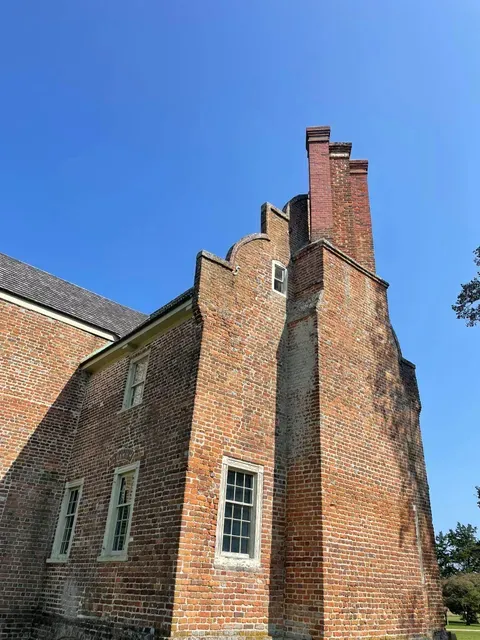
Side view of original 17th century portion of the building.
The Allen family.
Arthur Allen, of merchant status, came over from England and was the initial owner of the property. His son, Arthur II inherited the property at the early age of 21 since his father had passed.
The home itself was completed in the early 1670s. It's listed by Preservation Virginia as having construction started in 1665. Arthur II gets credit for the large gardens you can learn about when visiting.
The Allen family, through marriage and land acquisition, built a wealthier lifestyle in Surry County. They owned property on the James River which gave them the opportunity to have a wharf where goods were both imported from and shipped back to England.
In the early 18th century, a young Elizabeth Bray of Williamsburg married into the Allen family and that's when modifications to the interior took place, making it more fashionable. Restoration and updating is constant as new discoveries are made.
Elizabeth's story is captivating in itself. Click here to read about her.
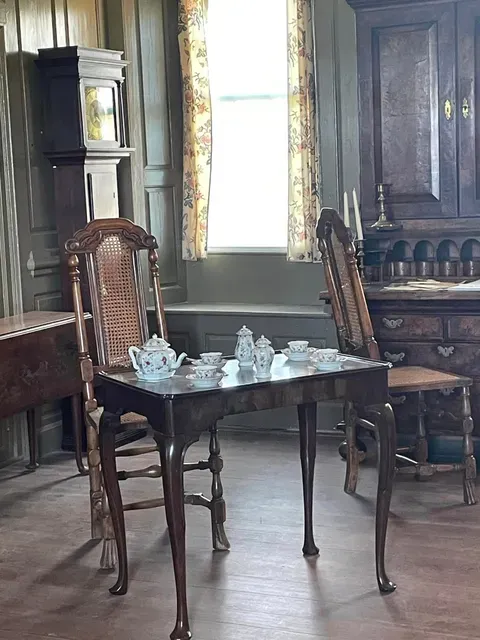
18th century style on display in Bacon's Castle.
Enslaved lived and worked on the property from the late 17th century into the Civil War era, until the time of emancipation. Also on the property were indentured servants.
Preservation Virginia has done an outstanding job of not only sharing the history of the Allens, whose descendants kept the property in the family for almost 200 years, but of their enslaved as well as those who were there after the Allens left.
Not only can you find genealogy and descendent information onsite, but you can view the outbuildings and also click here for a fascinating account of African-American history at the property.
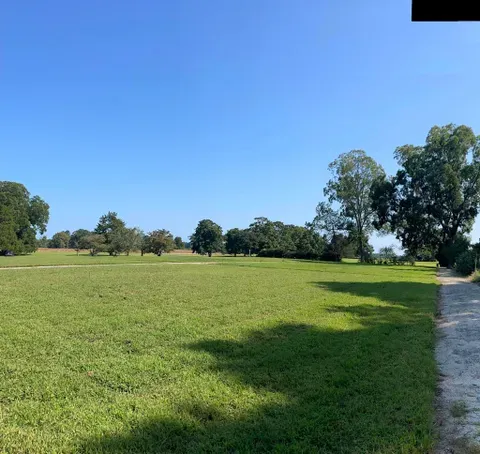
View of the area where Allen's gardens were located.
Why the Allen's brick house is known as Bacon's Castle.
If you've heard of Bacon's Rebellion, that's the basis for the name. However, Nathaniel Bacon didn't live here. And the home wasn't called Bacon's Castle until well after the Rebellion. Word is, after years of it being referenced as such in the area, the name finally became sort of official.
In early writings, the home was referenced as "Allen's Brick House."
Nathaniel Bacon was a contemporary of Arthur Allen II. His followers/supporters, or fellow rebels, went on a bit of a rampage. Arthur Allen II was in line with Governor Berkeley and fled with him and others to the Eastern Shore.
When Bacon's people got to the Allen home as they continued east, they parked it there for several months. Thus making it known as "Bacon's Castle," which in terms of the time and context, meant a fortified building, not a palace.
Click here for details about the short-lived Bacon's Rebellion if you want to dig deeper.
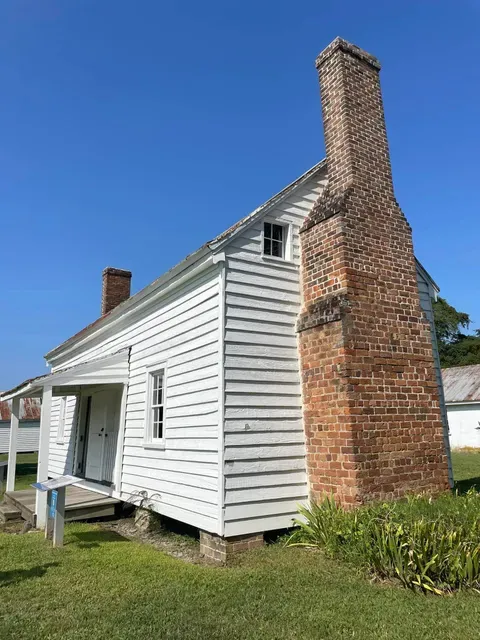
Enslaved quarters at Bacon's Castle
Plan your visit.
I'm going to make it easy for you: click here to plan your visit and purchase tickets. (scroll down or use the "plan your visit button" to get to the correct spot)
A few notes:
- No matter where you visit, always check the dates/hours a site is open.
- You can wander the grounds any time of year, even without the house being open. (we've done this and used their posted signage to do an audio tour)
- There is a gift shop that includes books on the area.
- You may find you're visiting the area when special events, including evening "haunted history" tours are available. Keep an eye out or subscribe to their mailing list!
- If you're visiting the Historic Triangle, you can take the FREE Jamestown-Scotland ferry to Surry. It runs 24/7 including holidays. There is also hotel space above the Surry Seafood Company. I've done all of this including a workcation at that hotel-and I highly recommend all of it.
And if you've visited Bacon's Castle and have anything to update or add, please drop it in the comments or connect by email (subscribe to blog!). I'd love to hear your impressions and take-aways of this fantastic piece of early American history.

High ceilings indicating intent for top floor functionality.
Closing words from history.
The closing excerpt from Nathaniel Bacon's 1676 Declaration of the People. You can view it transcribed in full here, with the online source I found. (I will update as necessary).
....
And we do further demand that the said Sir William Berkeley with all the persons in this list be forthwith delivered up or surrender themselves within four days after the notice hereof, or otherwise we declare as follows.
That in whatsoever place, house, or ship, any of the said persons shall reside, be hid, or protected, we declare the owners, masters, or inhabitants of the said places to be confederates and traitors to the people and the estates of them is also of all the aforesaid persons to be confiscated. And this we, the commons of Virginia, do declare, desiring a firm union amongst ourselves that we may jointly and with one accord defend ourselves against the common enemy. And let not the faults of the guilty be the reproach of the innocent, or the faults or crimes of the oppressors divide and separate us who have suffered by their oppressions.
These are, therefore, in his Majesty’s name, to command you forthwith to seize the persons above mentioned as traitors to the King and country and them to bring to Middle Plantation and there to secure them until further order, and, in case of opposition, if you want any further assistance you are forthwith to demand it in the name of the people in all the counties of Virginia.
Nathaniel Bacon
General by Consent of the people.
William Sherwood
Are you enjoying the blog? Use my online tip jar and buy me a coffee:
There is a huge practical disclaimer to the content on this blog, which is my way of sharing my excitement and basically journaling online.
1) I am not a historian nor an expert. I will let you know I’m relaying the information as I understand and interpret it. The employees of Colonial Williamsburg base their presentations, work, and responses on historical documents and mainly primary sources.
2) I will update for accuracy as history is constant learning. If you have a question about accuracy, please ask me! I will get the answer from the best source I can find.
3) Photo credit to me, Daphne Reznik, for all photos in this post, unless otherwise credited! All photos are personal photos taken in public access locations or with specific permission.
